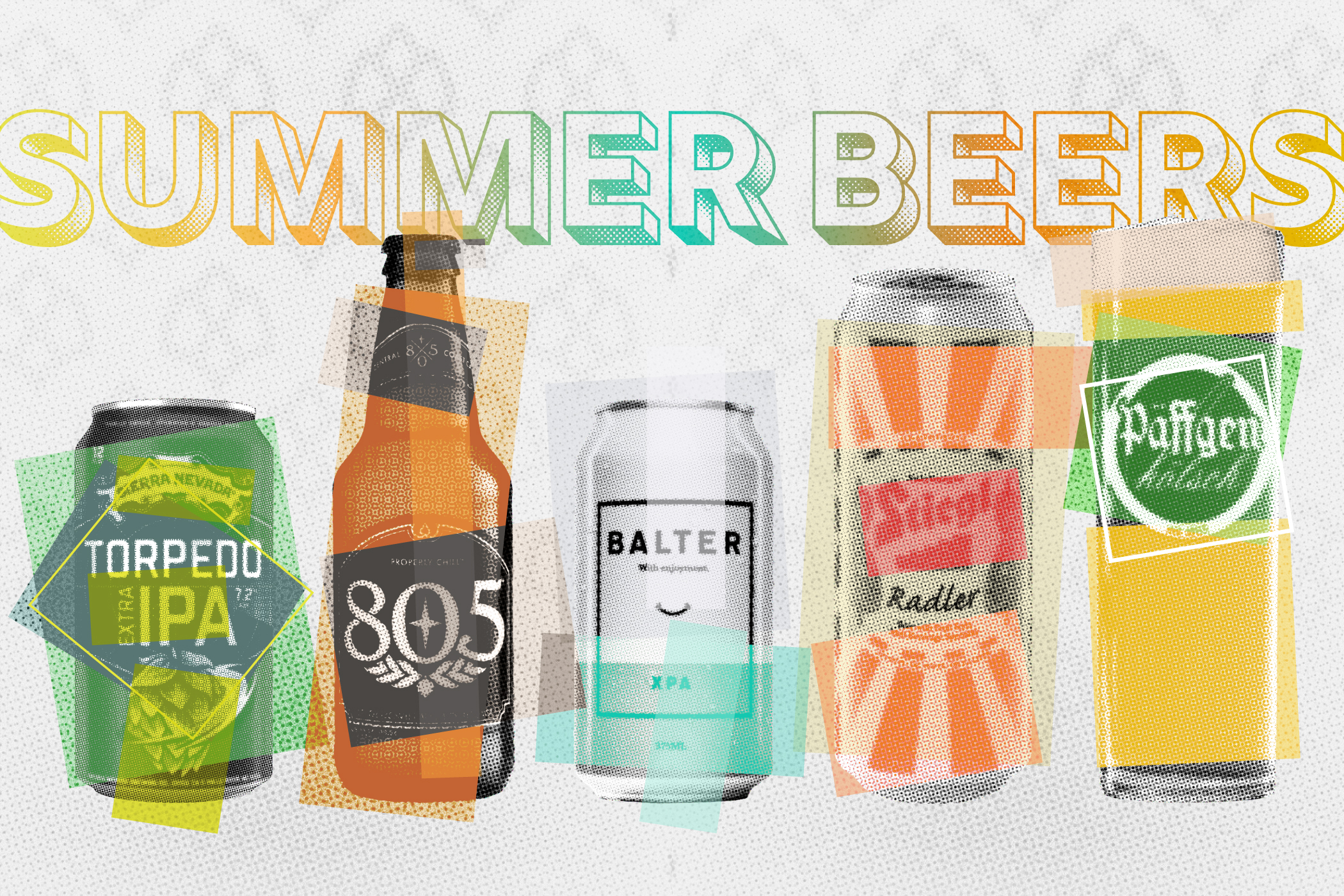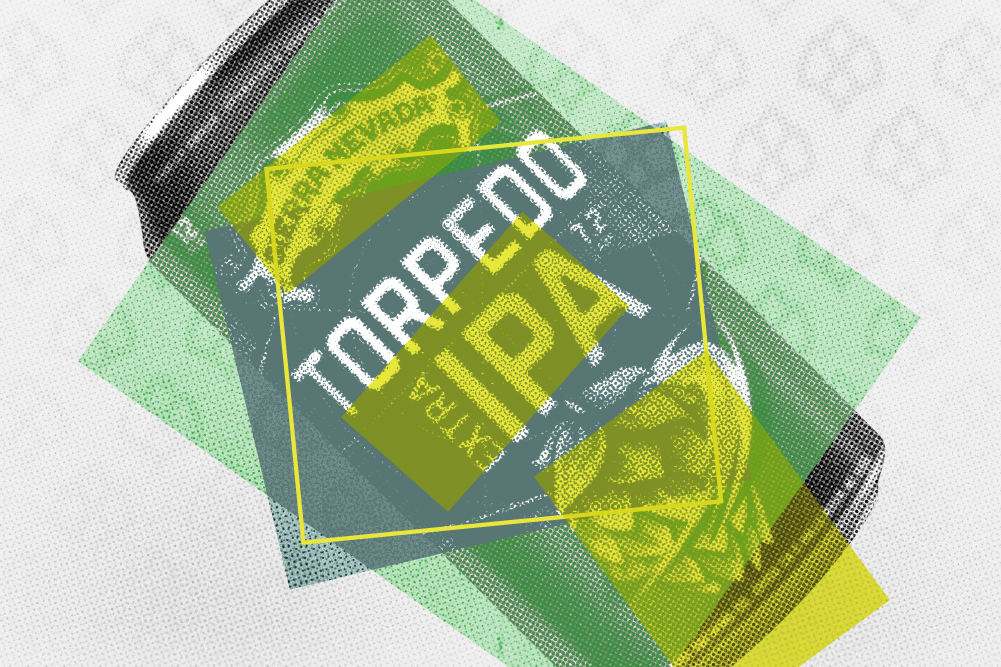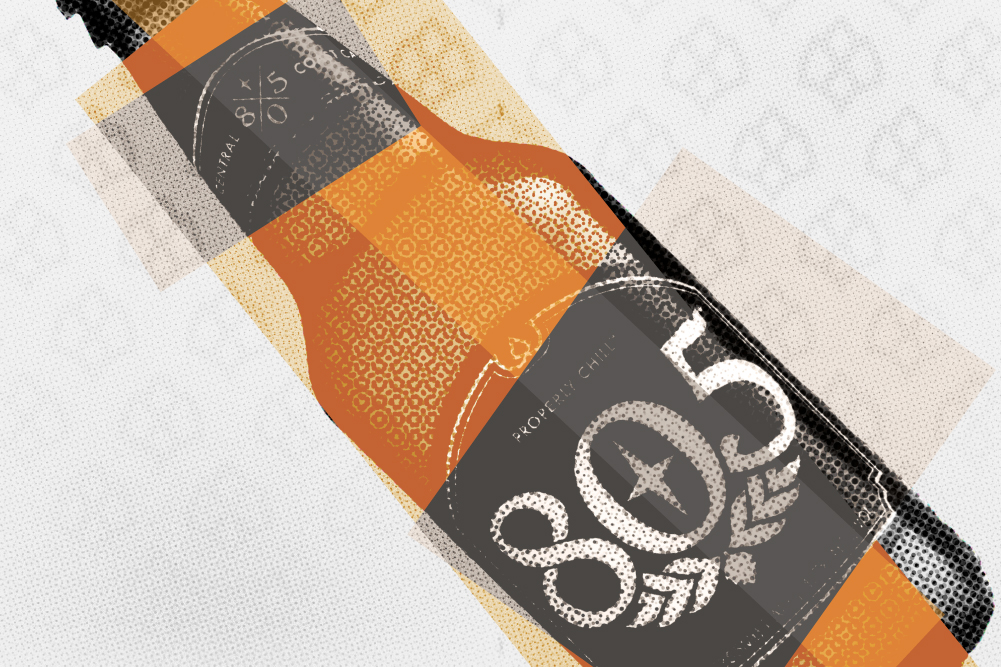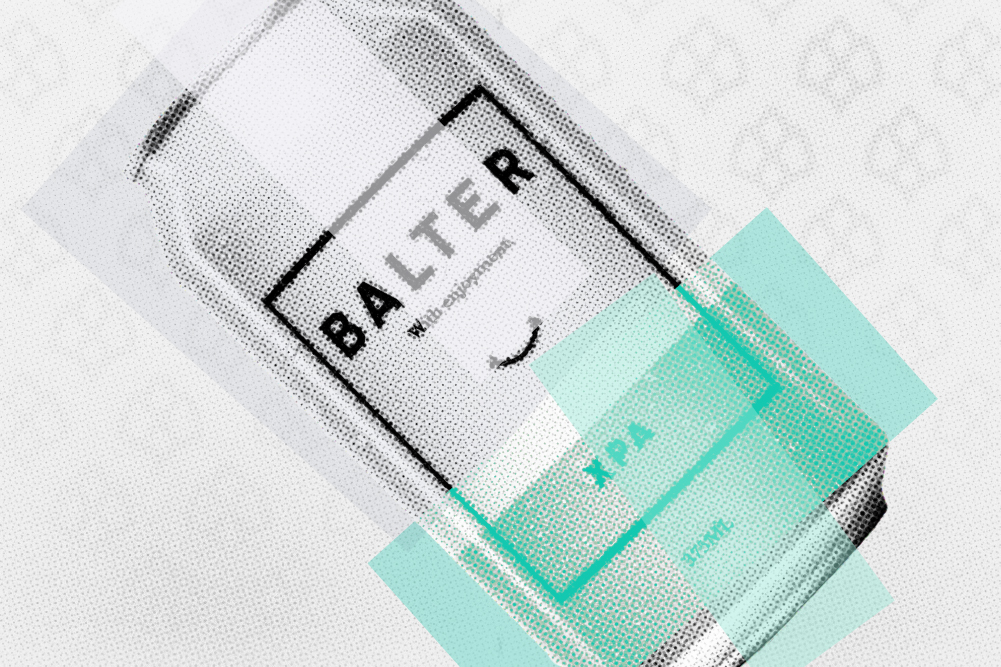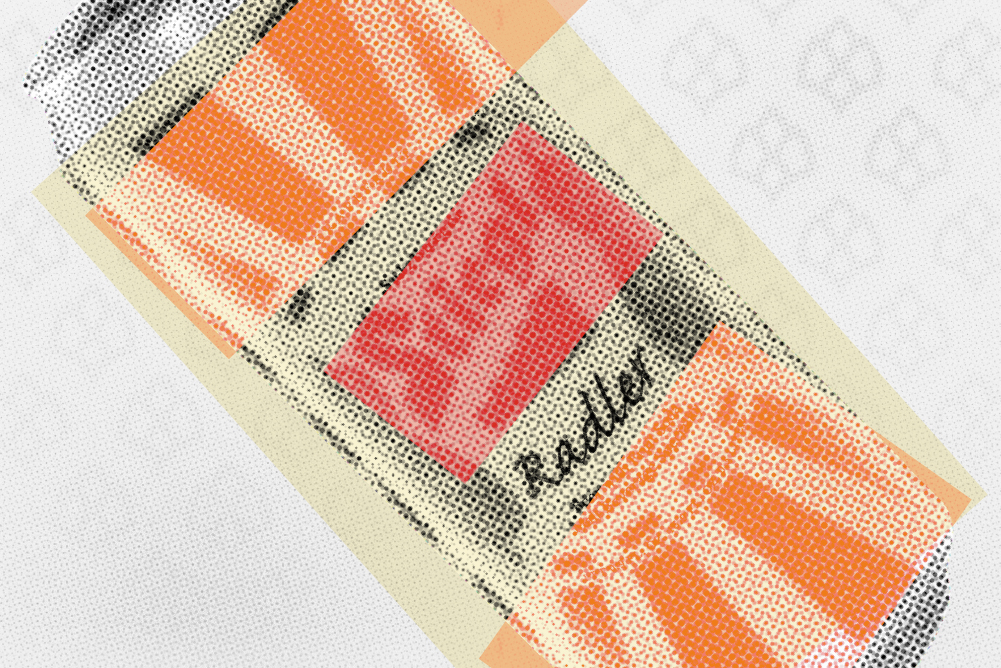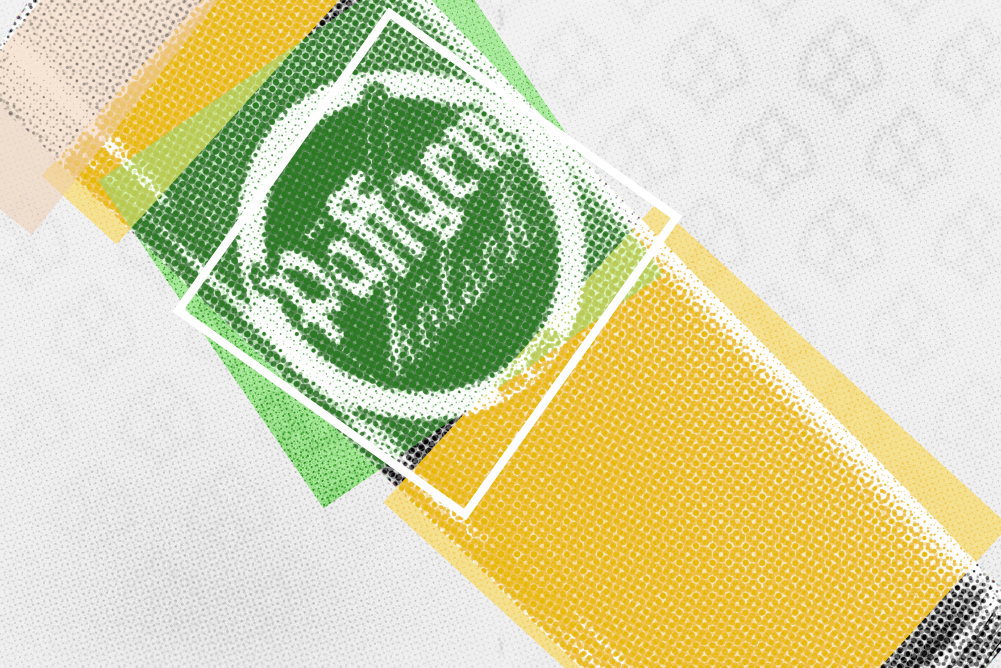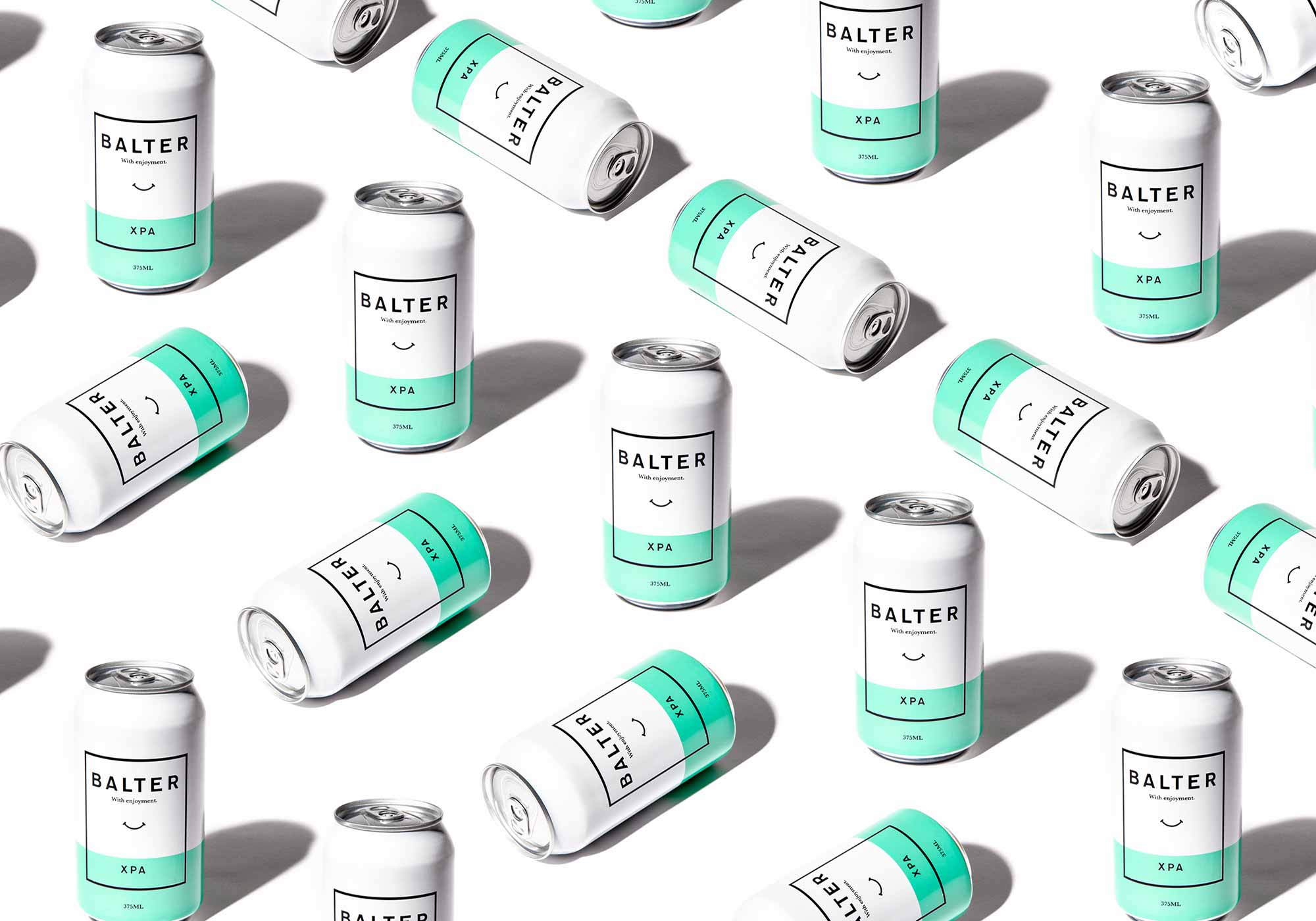Shop
The 25 Most Iconic Beers to Drink This Summer
Grill, chill, and spill.
Like This, Read That
We’ll admit, we’ve been slacking a little bit this year on giving you the best beers of the season. Don’t hate us! We’ve simply been doing a bit of traveling (see: New Zealand, Australia, Finland, and more).
Now that summer break is here… Just kidding, content never stops. Now that we don’t have any travel plans until September, we thought this would be the perfect time to catch up on one of the series you all love the most.
Welcome to another installment of “The Most Iconic Beers to Drink Each Season.” For this content, we’ll write about what we feel are the top five styles that pair best with the time of year, identifying the most iconic (and widely available) beer to drink in that style, along with a few other recommendations.
For summer, we’re envisioning exactly what beer style we want in our hands when we’re picnicking on the beach, cannonballing into the pool, and grilling on the deck.
Want to see more beers in the future? Hate this format? You can always drop us a line in our DMs or shoot us feedback at [email protected].
Our Most Iconic Beers for the Summer of 2025
American IPA
As American as apple pie, baseball, and the Fourth of July, the American IPA is a trademark beer style—one best drunk fresh from the tap, right after it’s bottled, or straight from the source.
Known for their beautiful floral, fruity, and citrus-like character, backed by a piney or dank hop profile, American IPAs hold a special place in the craft beer movement in the United States.
We have legends like Fritz Maytag at Anchor, Kim Jordan at New Belgium, Matt Brynildson at Firestone Walker, and, of course, Ken Grossman at Sierra Nevada to thank for perfecting American IPAs and leveraging this style to drive the entire craft beer movement.
So without further ado…
UNTAPPD’S TOP-RATED AMERICAN IPAS
Torpedo Extra IPA – Sierra Nevada Brewing Company
Chico, CA
American IPA – According to Sierra Nevada, Torpedo Extra IPA started as a napkin sketch in a pub. Sam Calagione developed the idea for a device that continuously distributed hops. In the same vein, Ken Grossman had an idea for a device that would enhance hop aroma without increasing bitterness.
A revolutionary piece of brewing equipment, the “Hop Torpedo” inspired the creation of Torpedo Extra IPA. Pleasant, if not a tad aggressive, in its bitterness, this American IPA includes whole-cone hops. Citra, Crystal, and Magnum contribute to the beer’s intriguing blend of citrus, pine, and grassy notes. In contrast, two-row pale and caramel malts add a nice, mellow backbone.
We give respect where respect is due.
Other Iconic American IPAs to Consider
🍻Russian River Blind Pig – You might not know it, but Russian River wasn’t co-founder Vinnie Cilurzo’s first brewery. Before his famed Santa Rosa brewery, the iconic brewer started Blind Pig Brewery in Temecula, CA. Although that brewery didn’t survive, Cilurzo would go on to work at and eventually buy Russian River Brewing Co. In 2005, he reintroduced his Blind Pig recipe, a true-to-type West Coast IPA characterized by low levels of orange and grapefruit, as well as moderate amounts of pine and resin. A Prohibition-era term for a speakeasy, Blind Pig shook drinkers’ tastebuds with its seventy IBUs, considered very high at the time. Today, the flagship beer is a testament to the power of the American IPA and the people who powered its hoppy revolution.
🍻Firestone Walker Brewing Company Union Jack – Firestone Walker’s version of a West Coast-style IPA set the tone for the entire modern movement. Named after its two British co-founders, Firestone Walker’s Union Jack is a beer for any hophead. Packed with Cascade, Centennial, Simcoe, Citra, Amarillo, Chinook, and CTZ, Union Jack should please any IPA enthusiast with big pine, pineapple, grapefruit, and tangerine notes. All perfectly balanced by a hint of malt sweetness.
🍻Tree House Julius – One of Untappd’s All-Time Top-Rated American IPAs, Julius is Tree House’s flagship American IPA, bursting with tropical American hops and pops of mango, peach, and passionfruit.
Like most of Tree House’s hoppy ales, Julius drinks with a dreamy, creamy mouthfeel that “ensures Julius will never tire the palate,” writes Tree House. “A true joy to drink!”
When we think of American IPAs and this entire style, Julius always comes to mind. This is a classic that can do no wrong.
🍻Ballast Point Sculpin IPA – In 2008, Ballast Point released perhaps its most recognizable beer, the one that created a buzz not only in San Diego but also the rest of the country: Sculpin IPA.
Today, when most people think of Ballast Point, they think of Sculpin.
Perhaps poetically, the recipe for Sculpin came from a couple of homebrewers, a direct nod to Ballast Point’s homebrewing heritage. George Cautalin and Doug Duffield consistently won homebrewing awards for their IPA recipes around San Diego. When comparing methods, they found a hop bill with similar ingredients. Combined with twenty-five-year Ballast Point veteran Colby Chandler’s own IPA formula, the three brewed a six-barrel batch of beer with Amarillo and Simcoe hops they planned to debut at a local watering hole called O’Brien’s.
“We were going to brew a one-off never to be brewed again, but the hook stuck,” said Chandler.
With hops that added a ton of bright tropical fruit and aromas of pine and orange, “the brightness of Sculpin matched the sun in San Diego.” It became an instant hit. At the time, most West Coast breweries focused on producing highly bitter beers, especially IPAs, but Ballast Point remained true to its well-balanced roots.
🍻Stone IPA – Released in 1997 as an anniversary beer, Stone IPA has become one of the best-selling IPAs in the country. Stone IPA leverages Magnum, Chinook, and Centennial hops for a super hoppy, crisp take on the classic West Coast IPA. As the brewery writes on its website, “This beer is as bold, fresh, and flavorful today as it was back in ‘97.”
Blonde / Golden Ale
When the summer heat cranks up to what these days feels like 110 degrees and the humidity makes it feel like you’re walking through an invisible shower, nothing cuts through it all like a crisp, refreshing golden ale.
Or is it a blonde ale?
The two names are often used interchangeably, but are they actually the same beer? Are these differing names the same style with a different marketing approach? Or is there actually a difference between the two?
Breweries have begun leaning heavily into the golden ale name, but not the traditional Belgian golden ale (another wrinkle in the picture here). Instead, to brewers, the term “golden ale” has come to represent a style that seems to share similar characteristics with a classic blonde ale.
Known for being sunshine-y, light-bodied, and easy-drinking, these golden or blonde-hued beers are best enjoyed in the warmer months.
805 – Firestone Walker Brewing Company
Paso Robles, CA
Blonde / Golden Ale – Perhaps the most successful blonde ale in the States, Firestone Walker’s 805 was originally brewed in 2012, just to serve the three counties around its Paso Robles brewery in California’s Central Coast. Hence, its name 805, which represents the city’s area code. At the time, Firestone Walker Co-Founder David Walker noticed that locals loved drinking one of the brewery’s easy-drinking blonde ales, then called Honey Blonde. Firestone Walker renamed the beer 805 to fully capture the essence of its hometown.
And the beer just crushed.
In three years, the little blonde ale that could had grown to a top twenty-five national craft beer brand despite its incredibly small footprint and simple grassroots marketing. The beer for surfers, musicians, climbers, skaters, campers, patio pounders, and more just struck a chord in a state known for its beautiful outdoors and adventures.
Today, the light, refreshing beer brewed for laid-back Californians is one of Firestone Walker’s best-selling brands and is now distributed across about fifteen states.
It remains one of the best examples of how a humble style can succeed when it’s put in the right hands.
Other Iconic Blonde / Golden Ales to Consider
🍻Kona Big Wave – Similar to 805, Kona Big Wave is a beer brewed for its people. Brewed initially as Pacific Golden Ale in 1994, Kona Big Wave was the realization of a dream from Kona Brewing Co. Founders Cameron Healy and Spoon Khalsa aimed to showcase Hawaiian culture through beer. Kona Big Wave represents Hawaii’s legendary surf scene and stands as the perfect complement to riding a great set. This blonde ale is all about island vibes, good times, and easy drinking.
🍻Victory Summer Love – First brewed in 2010, Summer Love is an ode to an American summer and everything we love about it—hot dogs and baseball games, burgers and beach barbecues, chips and endless dips during pool days. Initially brewed in partnership with Greater Philadelphia Tourism Marketing Corp, Victory’s Summer Love quickly became one of Victory’s most iconic seasonal beers. Much like Bell’s Oberon represents the end of winter and the first days of spring, this golden ale signals the start of summer and everything we love about it.
🍻Fox Farm Little Brook – The second highest-rated blonde / golden ale on Untappd, Little Brook gets hopped with Citra and Amarillo. We’re not sure we need to say more about this American ale, crafted by some of the country’s top lager purveyors. In fact, we’ll let them sum up this beer: “Small but mighty.”
🍻Bissell Brothers Baby Genius – When Noah and Peter Bissell started Bissell Brothers in 2013 in Portland, ME, they brewed one beer for the first nine months—Substance. The second beer they brewed? You guessed it: Baby Genius. Yes, that’s right—before Swish, before Reciprocal, and before LUX and Nothing Gold, there was this blonde ale. Currently rated as the third highest in this style category on Untappd, Baby Genius gets dosed with Citra, Ella, and Topaz for a hoppy, hazy blonde that Bissell calls “eclectic and crushable.”
XPA
What the hell is an XPA? It’s a good question.
“What the f**k is XPA?” Capital Brewing Head Brewer Wade Hurley asked himself when he first moved from Southern California to Fyshwick, Australia, where the style has absolutely taken off in the last half decade.
“If you ask any brewer what an XPA is in Australia, they’ll just be like it’s somewhere between a pale ale and IPA,” he says. “If you look it up, there’s no BJCP guideline. For XPA, you can kind of make it whatever you want.”
Australian brewer Scotty Hargrave, who helped proliferate the style with his Balter XPA, explains, “For me, it was always about extra pale comma ale. It was always about having a beer that had a lean but structured malt base that could handle all of those hops and deliver the balance and drinkability, but all the hop flavor in that five-ish percent alcohol range.”
A somewhat paradoxical style, XPA, for the most part, resembles a pale ale but is lighter in color due to a heavy dose of pale malt. It will also be higher in bitterness, yet more drinkable, and lower in alcohol.
Pfriem Co-Founder and Brewmaster Josh Pfriem has made the Oregon-based brewery’s Extra Pale Ale for the last eight years. He was the only American brewer we spoke to who didn’t appear to have based his version on any Australian influence. Although he, too, finds the style hard to pin down, his definition comes pretty close to Hargrave’s.
“We wanted a lean base but not go straight to pale because we wanted a supportive alcohol and malt presence behind it so that it wouldn’t go thin, but you could throw a ton of hops and really see the hops lift,” says Pfriem, noting his version went back to a simple pale ale base that they didn’t want to define as an IPA.
“XPA is a mysterious sector of craft beer,” says Humble Sea Co-Founder and Director of Brewing Operations Nick Pavlina, who brewed an XPA collab with Firestone Walker after he traveled to Australia for the hop harvest a few years ago.
Pavlina and Firestone Walker Brewmaster Matt Brynildson found the style dominated. Every brewery they visited had an XPA or two, and they drank them all. “I’d never seen so many XPAs all at once!” shares Pavlina.
But they weren’t entirely sure how to define style.
“What the hell!?” Pavlina remembers thinking on morning runs as the two tried to unpack the style’s layers (and burn off all the ones they drank the night before!). “Our consensus was extra pale in color, so not quite as malt-driven as traditional pale ale, but also a little leaner than an IPA, so it’s kind of right in line between session IPA, pale ale, and IPA.”
You can see how this almost Goldilocks style perplexed Pavlina and Brynildson—they had to “eat a lot of porridges” to find the right definition.
“If I were asked how to define XPA, a true Australian XPA should have an ABV of five or less, really light in body, like an American pale ale,” says Brynildson. “It should be somewhere on the lighter end, but probably not a lot of specialty malt. It should be pretty dry.”
While the definition of XPA may elusively shimmer like an Australian heat wave, one thing where everyone now agrees: XPAs are damn delicious for summer.
XPA – Balter Brewing Company
Currumbin, Queensland, Australia
XPA – When we asked Pavlina for examples of the best XPA he drank in Australia, he immediately answered with Balter XPA. “Just super clean, well done,” he shares. “Super crushable.”
Hargrave still can’t believe this archetypal beer has taken off like it did.
“I made it for here; I made it for me,” he divulges. “It was a puzzle. I want to use all these new hops and put them in a beer, but I don’t want to be stuck just having one of them. And I’d like to be able to sit at the edge of the pool and drink three or four of these if I want.”
It’s just a classic example of the beer that started it all for XPAs in Australia—clean, refreshing, low ABV, and yet packed with tropical notes from the American hops. It’s XPA perfection.
Other Iconic XPAs to Consider
🍻Capital Brewing XPA – For Capital’s XPA, Hurley starts with a local craft malt from Voyager called Organic Schooner Malt. “Basically, it adds a lot of body and helps get that higher final gravity without adding too much color or flavor,” he says. “You get some subtle malty sweetness out of it, but it’s not like a toffee or caramel flavor, which makes you want to smash [it] down, especially on a hot day!”
Hop-wise, Hurley skews towards Hargrave’s new-world American hops, using Mosaic, El Dorado, and Amarillo hops.
“I always thought Mosaic and El Dorado together throw a lot of sweet candy [flavors],” he tells me. “Mosaic throws like blueberries, bubblegum. … I get grape Jolly Rancher.”
Amarillo balances everything out with citrusy components.
“It’s not, in theory, a sweet beer,” says Hurley. “But I think when you drink it, those hops and a little bit of the higher finishing gravity complement each other really well and make it really easy to drink.”
Reaching 5% ABV and only 30 IBUs, XPA, when you drink it, hits you with hops up front, finishing sweet, and as Hurley points out, “makes you want to come back for more!”
🍻pFriem Extra Pale Ale – Josh Pfriem says that Extra Pale Ale “should be a bright beer that’s slightly golden with a touch of copper.”
Where pFriem’s XPA hits you is on the nose with some big tropical papaya, mango, and a bit of tangerine sherbet.
Brewed with Mosaic, Citra, and Strata to “give a little strawberry,” pFriem’s XPA hits the palate with “big strawberry, big cantaloupe, big sweet citrus, and a little bit of tropical round softness,” says Pfriem, noting a balanced bitterness is critical.
“Something really important to us is that all pFriem beer shouldn’t be a big blast in the face the first couple of sips and stay heavy on the palate towards the end,” he explains. “The end of the glass should show up way faster than anticipated, and you’re already looking for the next by the time you finish your first.”
🍻Firestone Walker XPA – Crispy, hoppy, crushable. Those three words capture Firestone XPA perfectly. “The appeal of XPAs is obvious,” says Brynildson. “They offer everything you love in a good pale at a crushable ABV.”
Hovering at just about 5% ABV, Firestone XPA, in an early batch, earned a bronze at the 2023 Great American Beer Festival in the International Pale Ale category.
Brynildson and Firestone Walker Propagator Brewery Manager Sam Tierney, who performed most of the trials for this beer, mainly used Nelson Sauvin for its tropical Sauvignon Blanc qualities. A complement of Mosaic rounds out this extra pale ale for an homage to Firestone’s history of pale ale-making with a new-school twist.
“Creating this beer brought a lot of joy to our production team; there was definitely some pent-up enthusiasm for pale ale brewing,” says Brynildson. “We wanted to lead with the punchy tropical qualities of the Nelson hop, and we found that adding just the right amount of Mosaic makes the fruit flavors all the more lush and expansive.”
🍻3 Floyds Zombie Ice – The highest-rated Extra Pale Ale on Untappd, Zombie Ice is “crafted with an unholy amount of citra hops,” writes 3 Floyds in the beer’s Untappd description. “This Undead Double Pale Ale heralds the zombie evolution after the dust has settled from the apocalypse.” Do with that what you will.
Radler / Shandy
As Hop Culture Freelancer Andy Crump reported for us in a story on radlers:
According to local legend, Franz Xaver Kugler invented the radler in June 1922. While history can neither confirm nor deny this fact, the story is worth telling. As the tale goes, Kugler, an innkeeper in Deisenhofen, Germany, capitalized on the country’s biking craze by creating a trail from nearby Munich to his tavern. One beautiful day in June, 13,000 cyclists wound their way to his establishment, looking to quench their thirst. Overloaded with thirsty patrons, Kugler quickly began to run out of beer. But a stroke of genius saved him. Kugler cut his pilsner with overstocked lemon soda.
While some of these details may seem unbelievable, and even though no official records support or refute this narrative, it’s certainly a story worth repeating.
And nearly a century later, we’re still talking about and drinking Radlermass, which literally translates to cyclist’s liter in English.
Besides, whether we know the radler’s true origins or not, it’s still a humble drink that’s damn delicious in the heat of summertime (or even winter, if you prefer).
It’s a testament to the radler that people still blend lemonade and lager even today. Though this drink is more prevalent in its homeland of Germany than the United States, it’s appreciated in the land of NEIPAs and pastry sours nonetheless.
There’s never a wrong time to reach for a radler, but there’s no better time than in the hot hot heat. A drink that has endured for almost a hundred years is worth adding to your drinking rotation.
After all, why drink a regular lager when you can drink a radler?
Stiegl Radler – Grapefruit – Stieglbrauerei
Salzberg, Austria
Radler – In the canned department, Mark Dredge, a beer, food, and travel writer and owner of BeerDredge, based in Eastbourne, East Sussex, England, swears by Stiegl Radler, which, for whatever reason, is “almost getting a cult following in the U.K.,” even though the beer is neither rare nor expensive. Made by Austria’s largest private and second-largest overall brewing company, which has been around since 1492, Stiegl’s grapefruit radler captures this iconic drink perfectly. Mixed with one-hundred-percent real grapefruit juice and a Steigel mildly hoppy pale lager, brewed with Alpine water, this radler is a delicious, thirst-quenching summer sipper.
Other Iconic Radlers / Shandies to Consider
🍻Schöfferhofer Grapefruit – Launched in 2007, Schöfferhofer Grapefruit is pretty unique, considered the first beer to mix fifty percent of Schöfferhofer’s Hefeweizen with carbonated grapefruit juice. Zesty, citrusy, and spritzy, this radler is best enjoyed during the hot summer months.
🍻Braxton Brewing Scooter Blood Orange Radler – Highlighting the blood orange for a fun spin on the original radler, Scooter Blood Orange Radler “takes your taste buds on a refreshing ride,” according to the beer’s Untappd description. “Every ride has a story. Make it an adventure with Scooter Blood Orange Radler, crafted for sunny days, smooth sips, and crushable refreshment
🍻Hoppin’ Frog Tequila Barrel-Aged Turbo Shandy Citrus Ale – Untappd’s fourth-highest-rated shandy / radler of all time, Hoppin’ Frog Tequila Barrel-Aged Turbo Shandy Citrus Ale, encourages you to “taste the sunshine.” While a radler usually includes some type of citrus juice, such as grapefruit, mixed with beer, a shandy features a lemon or lemon-lime flavored beverage, such as lemonade. Hoppin’ Frog’s highly rated version takes this concept a level further, aging the beer in tequila barrels. For a more modern take with an American craft beer spin, Tequila Barrel-Aged Turbo Shandy Citrus Ale “is track-ready and fine-tuned for the best performance, according to Hoppin’ Frog.
Kölsch
In Köln, you’ll find one beer style prevalent across the city—kölsch.
The German beer style “is an easy-drinking pale ale,” says Dovetail Brewer and Marketing and Creative Manager Jenny Pfafflin. “It has that nice water cracker malt profile, and then what makes köslch unique is the fruity, vinous quality in the aroma as well from the yeast.”
Typically featuring German malts and Noble hops, kölsch is all about the yeast, according to Everywhere Co-Founder and Head Brewer Stefan Weber. “Anybody saying they’re making a kölsch, if they’re not using a kölsch yeast, it’s not a kölsch,” he says. “That yeast is super unique. It’s honestly a little funky, it’s a little fruity, but you can’t have kölsch without it.”
Synonymous with beer in Köln, kölsch is so vital to the town that, in 1986, more than twenty-four kölsch breweries banded together, signing something called the Kölsch Konvention.
The document outlined the specifications for brewing a kölsch, including that breweries must brew these beers only a short distance from Köln.
Codified in 1997, kölsch is now protected as a geographical destination. Similar to how real champagne can only come from the Champagne region of France, or real Oktoberfest can only come from one of the six original breweries in Munich, Germany. Technically, any brewery making a kölsch outside of Köln should be calling it a kölsch-style ale or something akin.
Which is why opinions on “the best kölsch in Köln” are varied, aggressive, and loyal. We have not been to Köln, so we’re not making any definitive statements, but here are a few classics from both Germany and the U.S.
Päffgen Kölsch – Brauerei Päffgen
Köln, Germany
Kölsch – Debate rages on regarding who serves the best kölsch in Köln. But Päffgen Kölsch continually tops people’s lists. When Hop Culture Freelancer Ryan Pachmayer (who has written excellent guides for us on the best places to drink in Munich and Franconia) visited himself, this particular kölsch blew him away. He found it perfectly harmonized with the definition of a kölsch.
Other Iconic Kölsch to Consider
🍻Früh Kölsch – One of the most popular breweries in Köln, Früh is most likely packed with both tourists and locals alike. Most folks who have been to Köln will recommend visiting Früh, especially if you only have time to stop at one brewery. A recipe from the brewery’s original family founder, Peter Joseph Früh, Früh’s Kölsch is a classic example, characterized by a subtle breadiness, mild bitterness, and slight fruitiness. This is just a satisfying kölsch.
🍻Reissdorf Kölsch – Probably one of the most well-known kölsch breweries outside of Köln, Reissdorf also always enters the conversation around the best places to drink kölsch in Köln. It’s a bit maltier and has a heavier body, but still finishes with a slight hoppy note. Although if you visit, unlike Päffgen and Früh, Reissdorf doesn’t have a pub, so you’ll need to find a local bar where you can enjoy this kölsch.
🍻Human Robot Kölner – If you can’t make it to Germany any time soon, we highly recommend tracking down Philadelphia-based Human Robot’s version. We believe Human Robot makes some of the best lagers (and lager-style beers) in the country, and Kölner helps us prove that statement. Untappd’s seventh-highest-rated kölsch of all time, Kölner goes through a single decoction process and includes German pilsner malt and Hersbrucker hops for a kölsch that’s as true to style as you can get in the States.
🍻Notch Kölsch – Another American brewery that crushes when it comes to lagers and lager-ale hybrids, Notch makes a kölsch that’s a bit fruity and grape-y with spicy, herbal undertones. Everything finishes dry and crisp, providing that classic kick you want in a kölsch.

